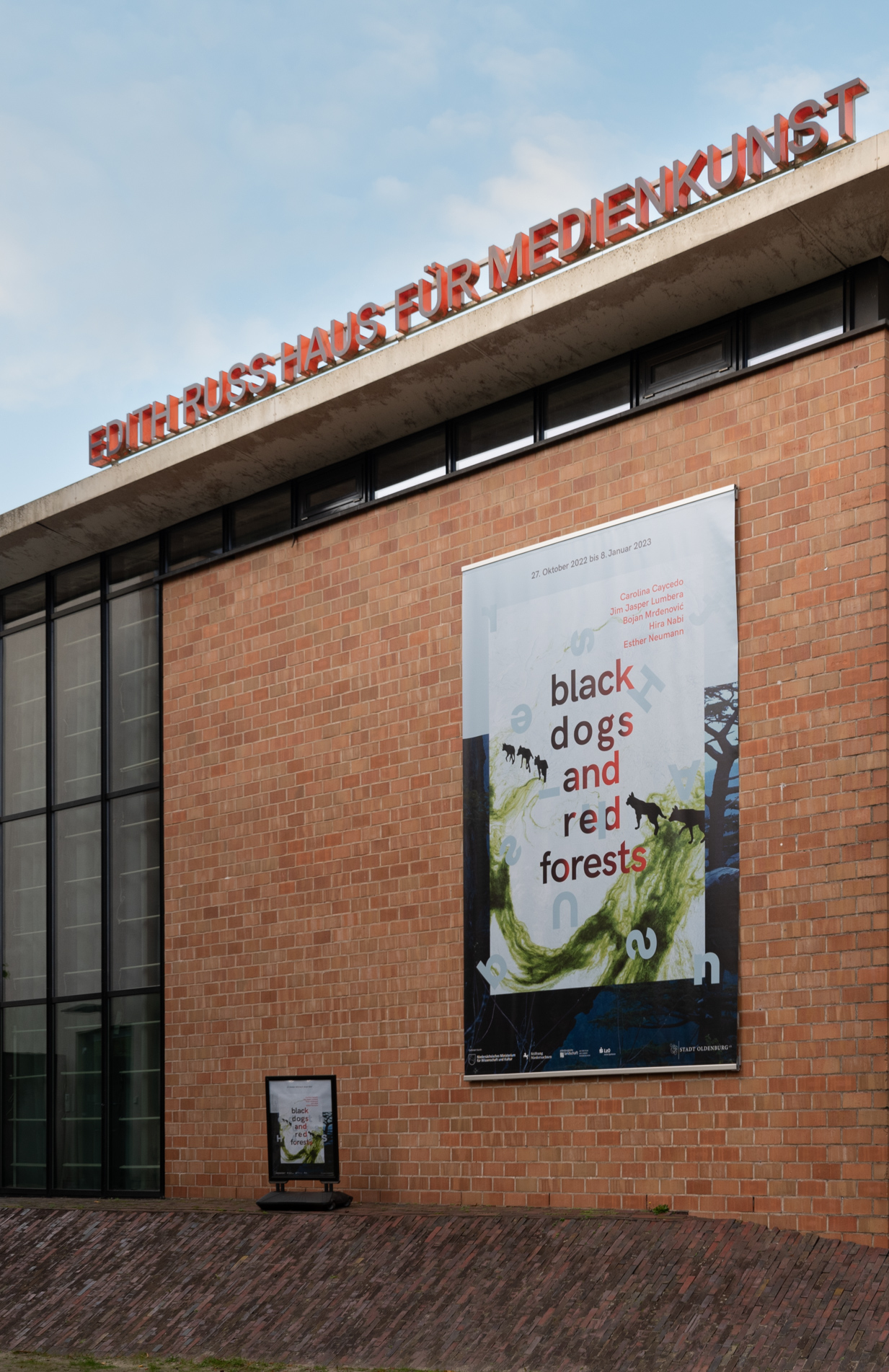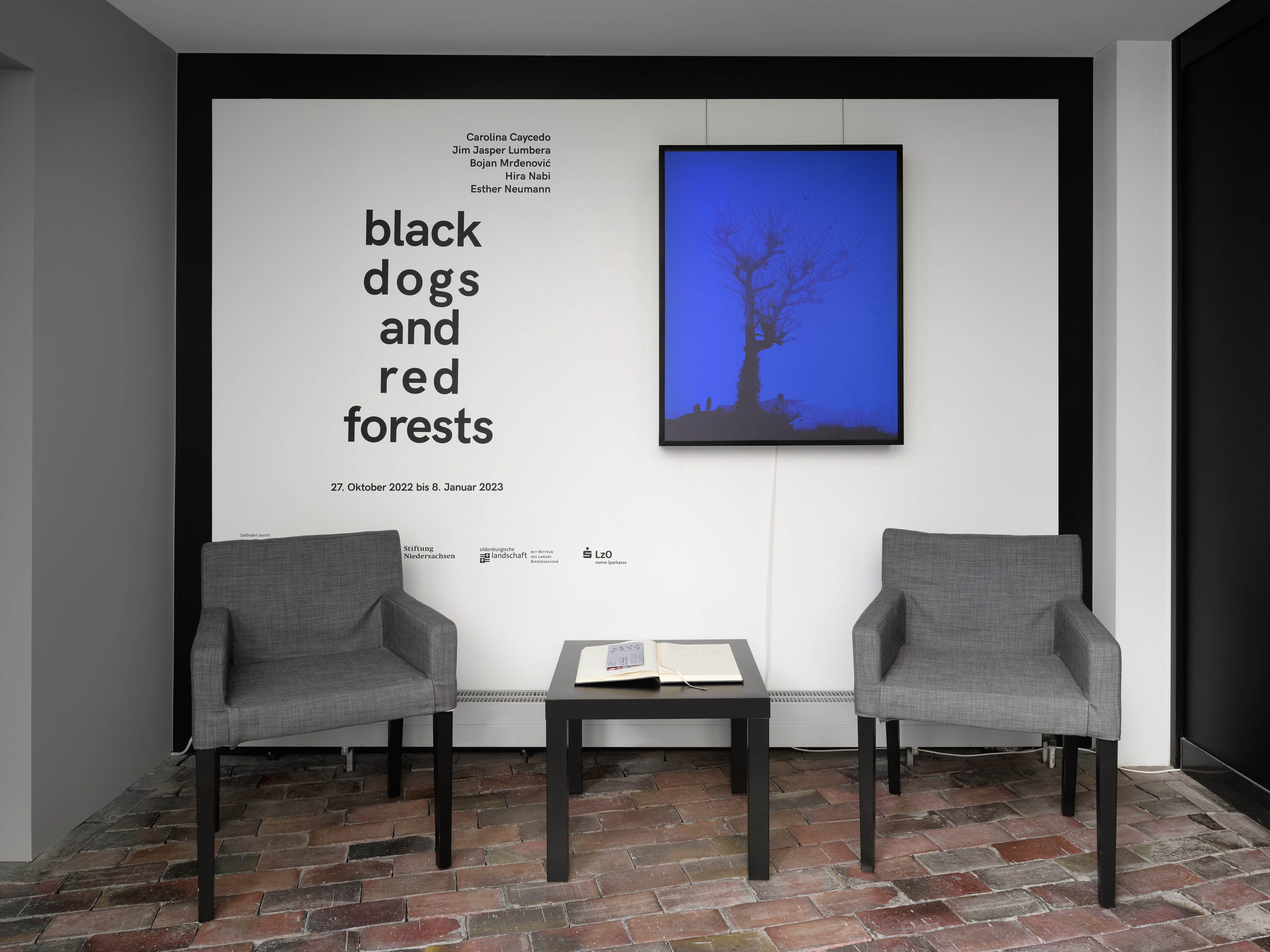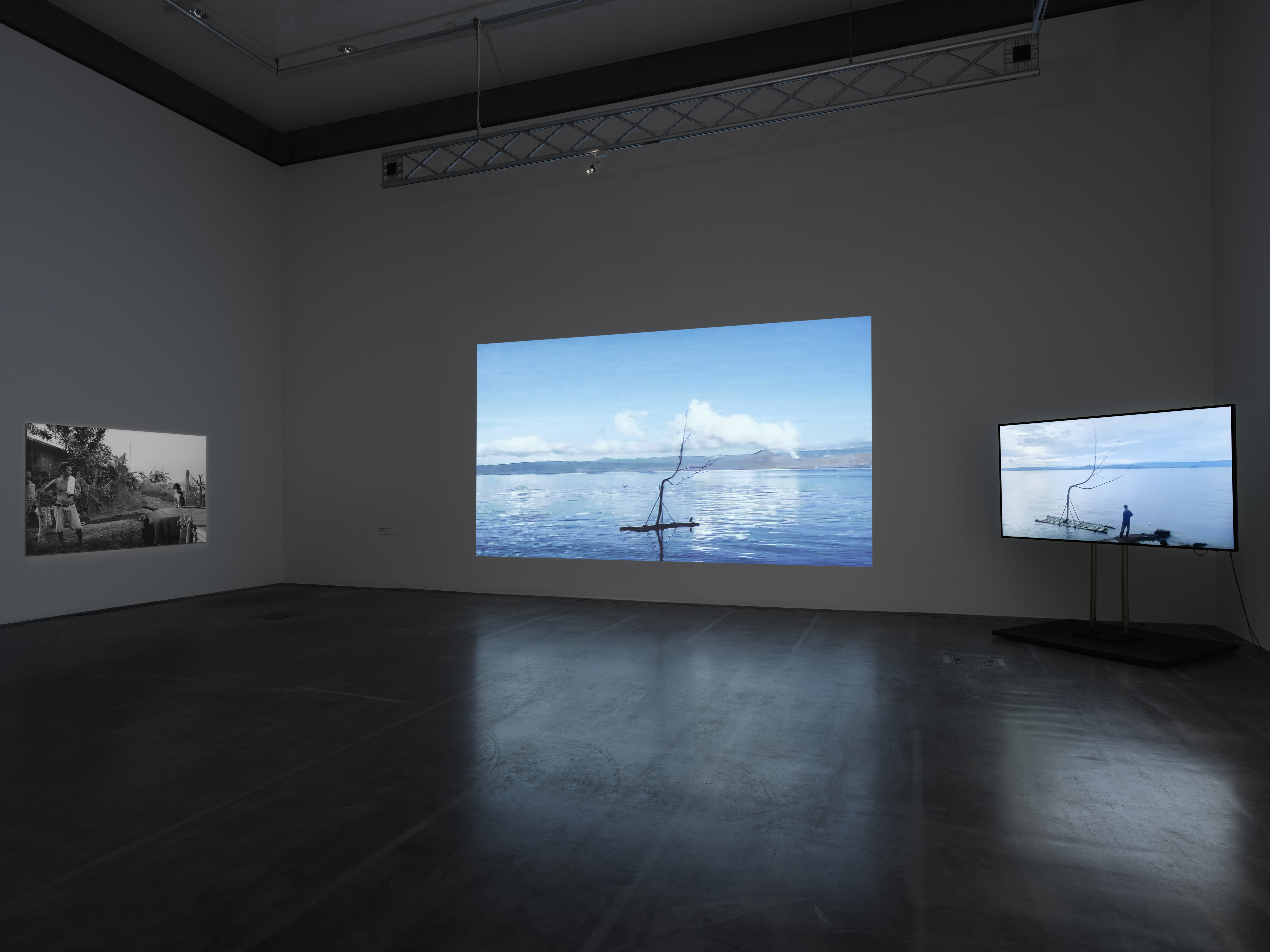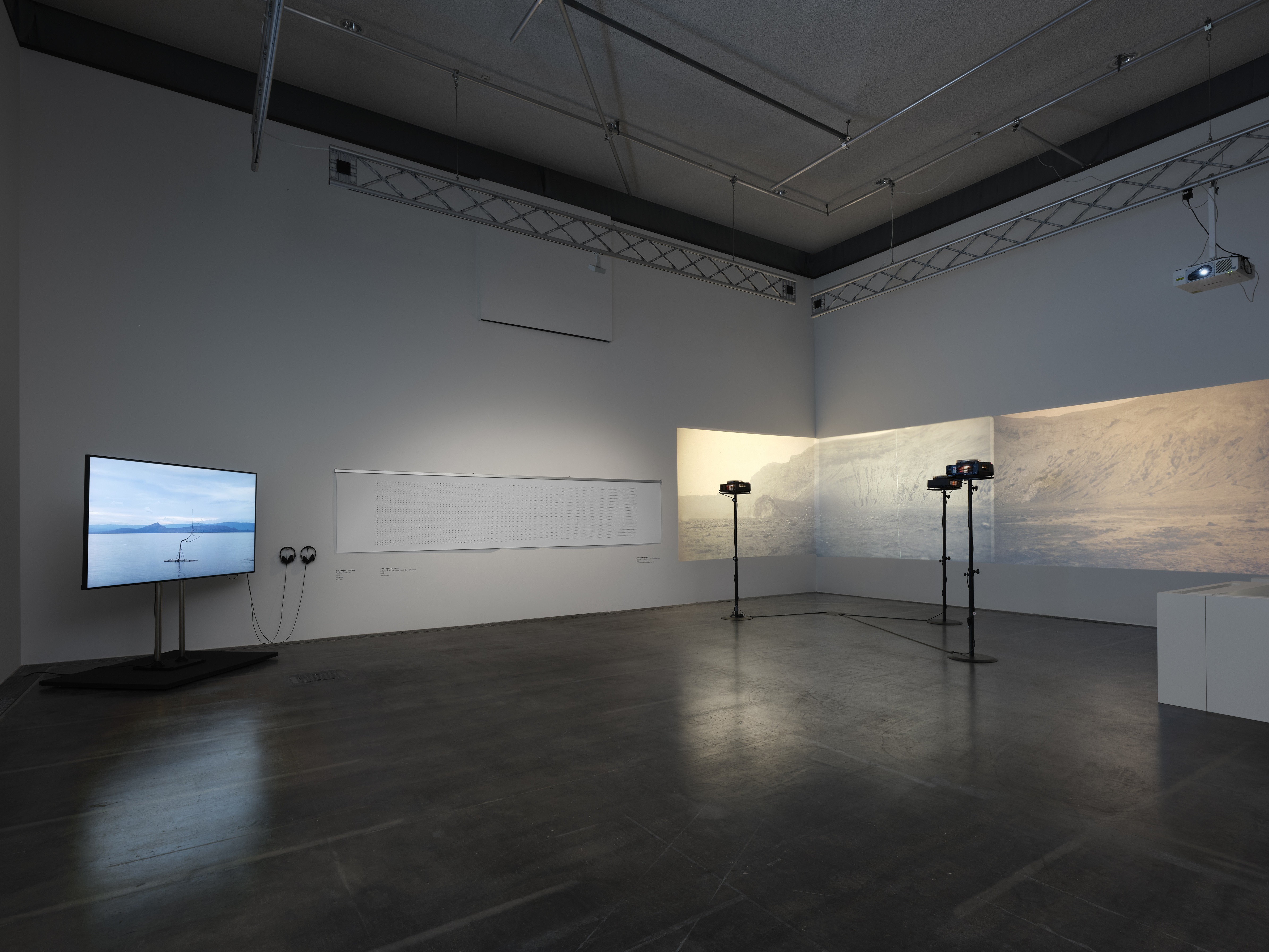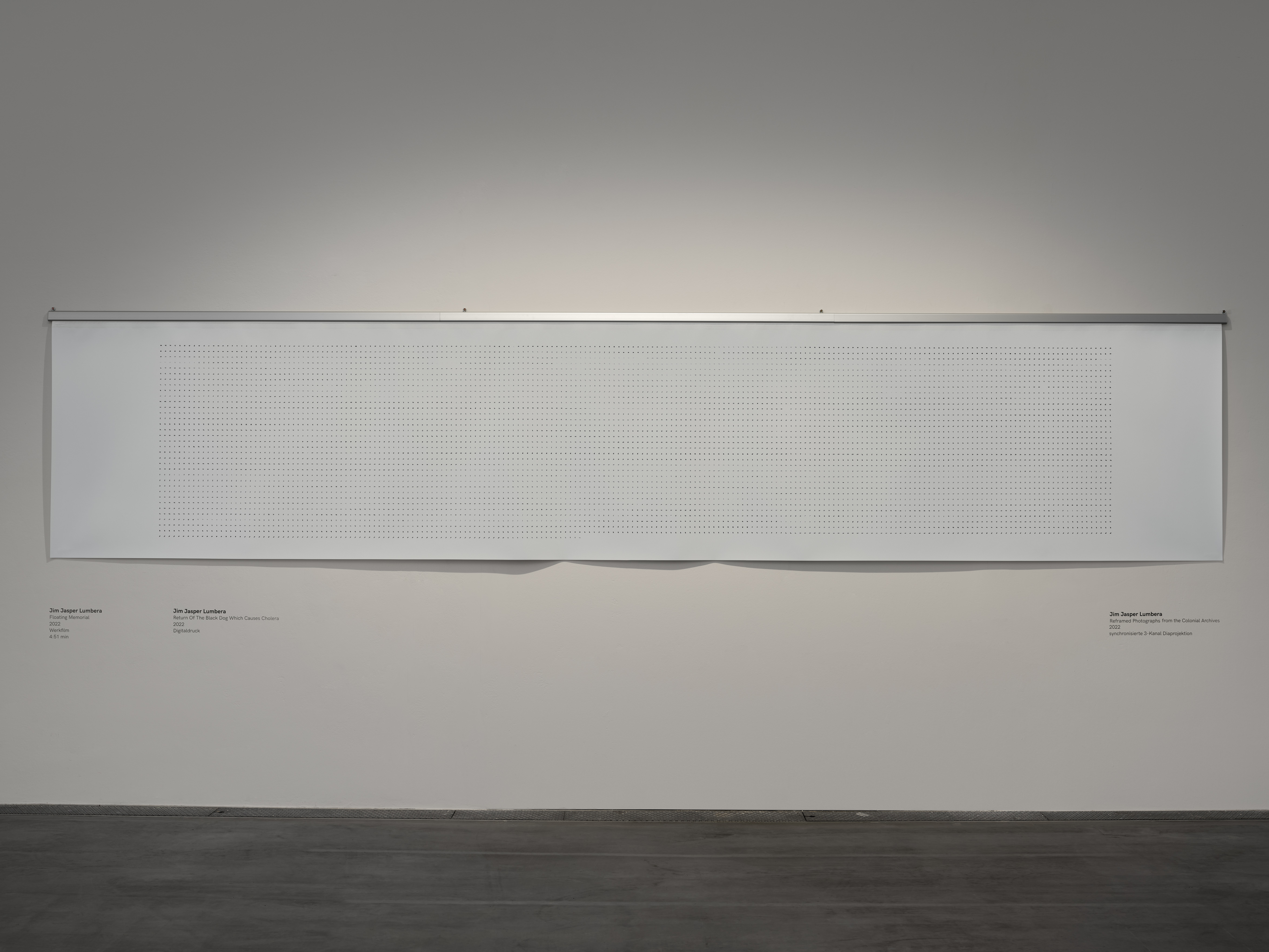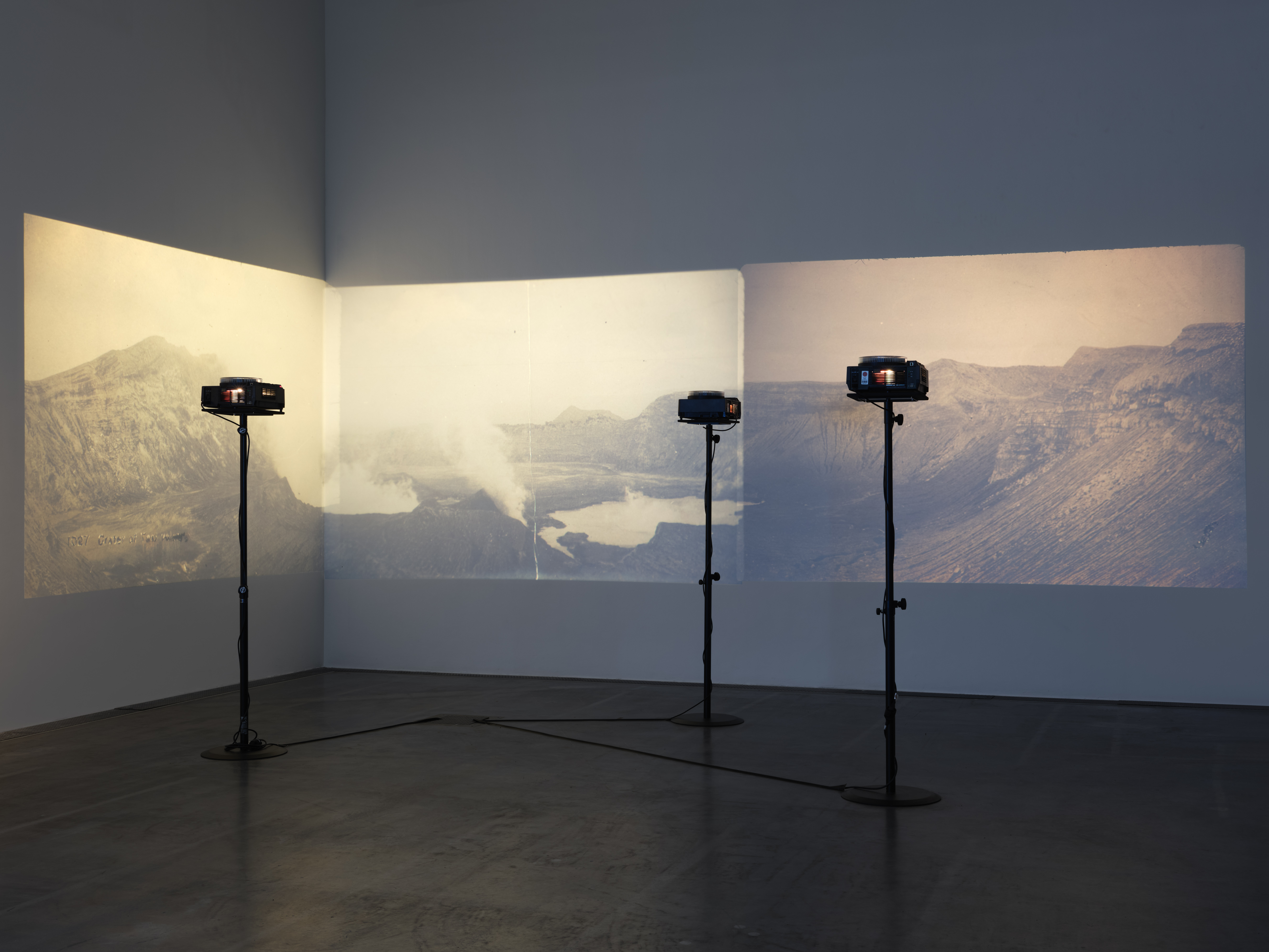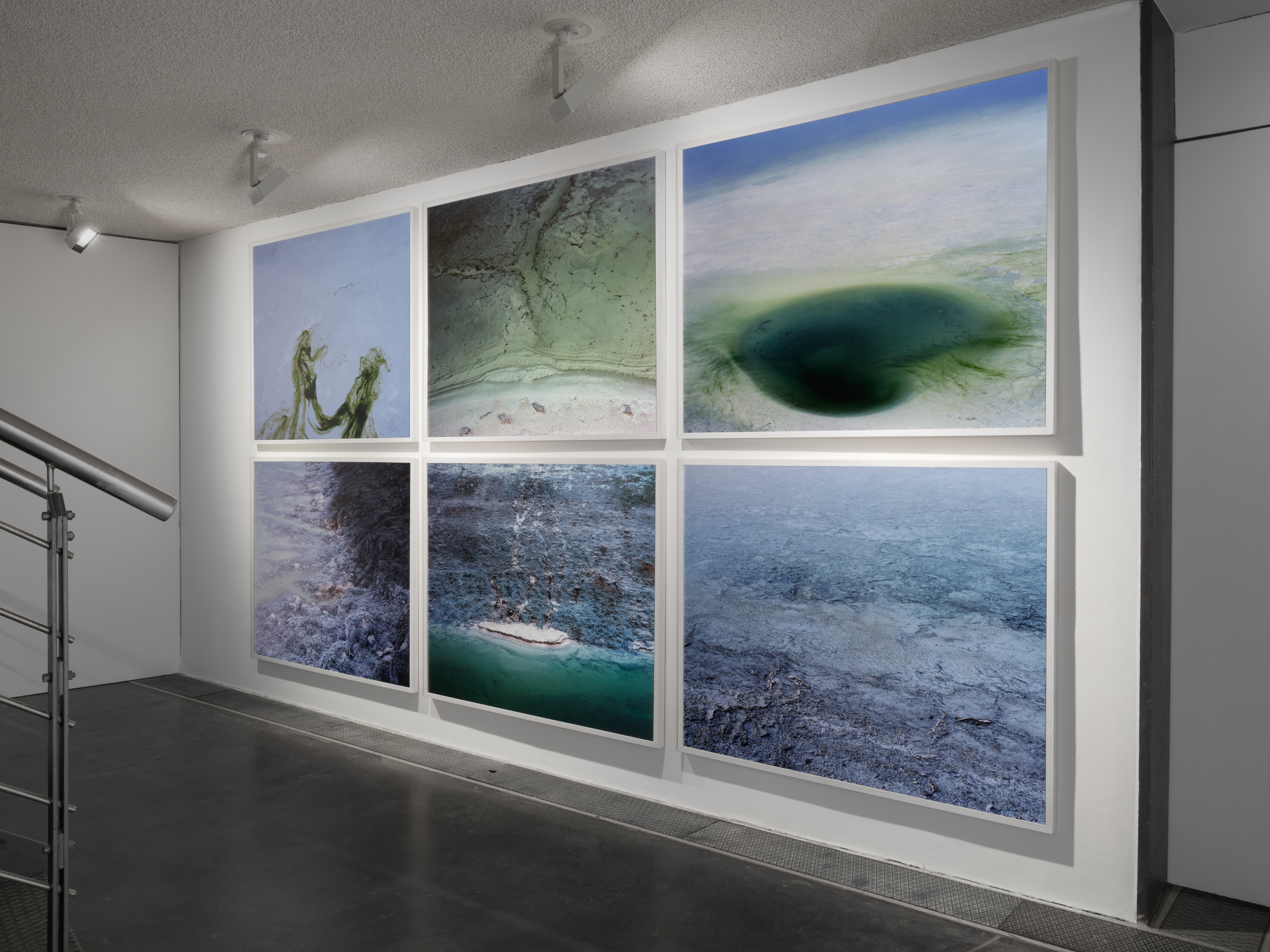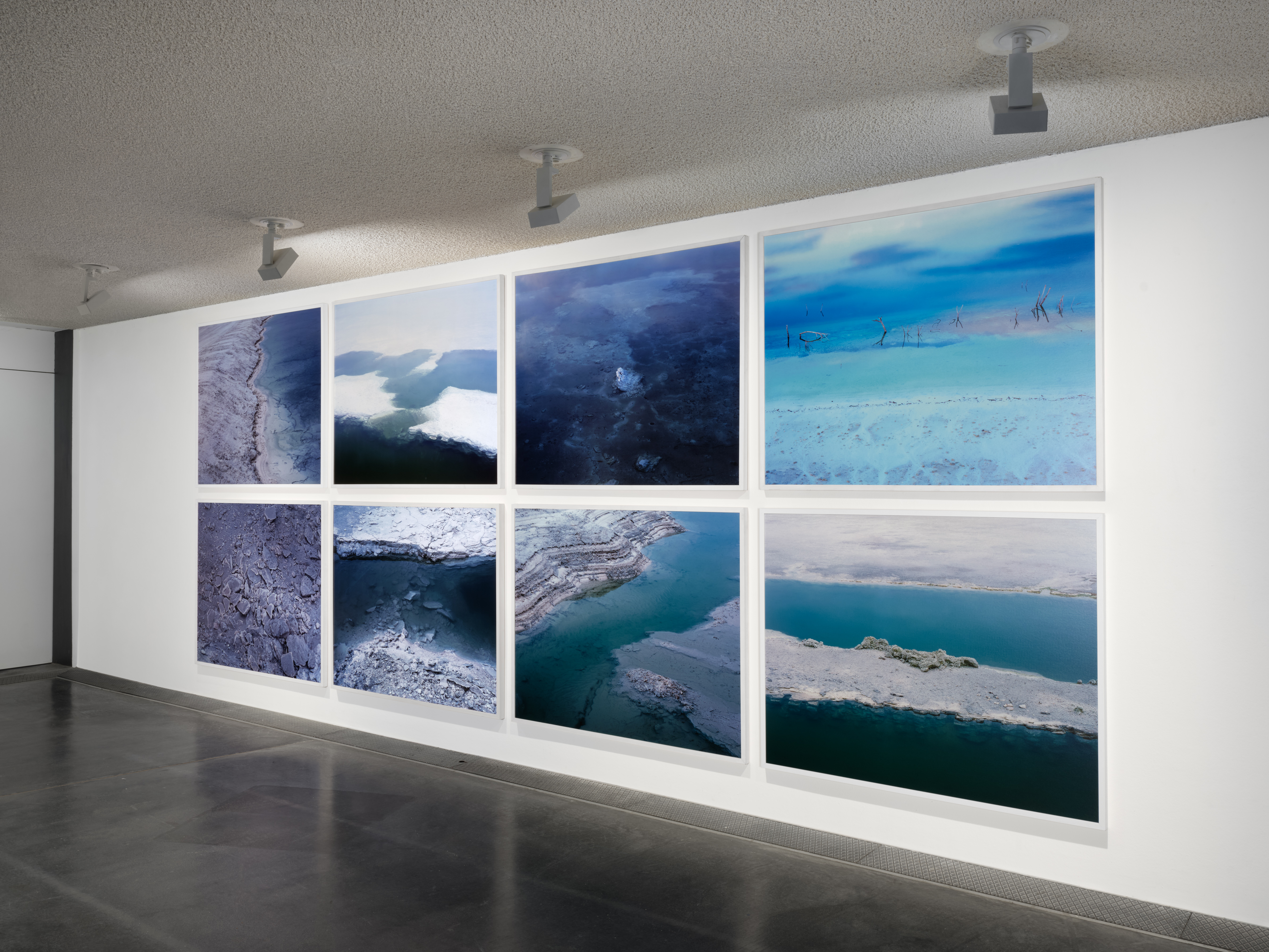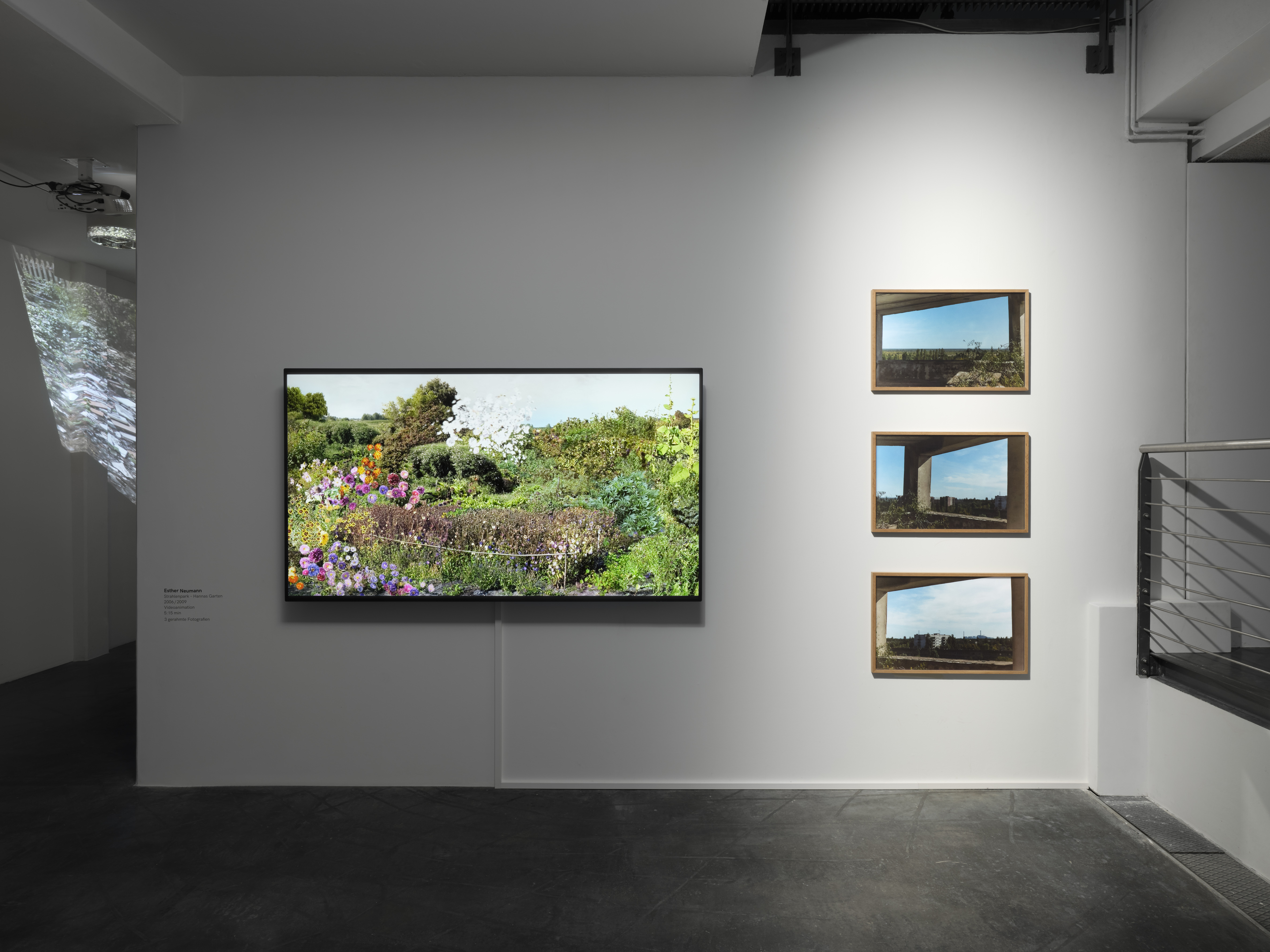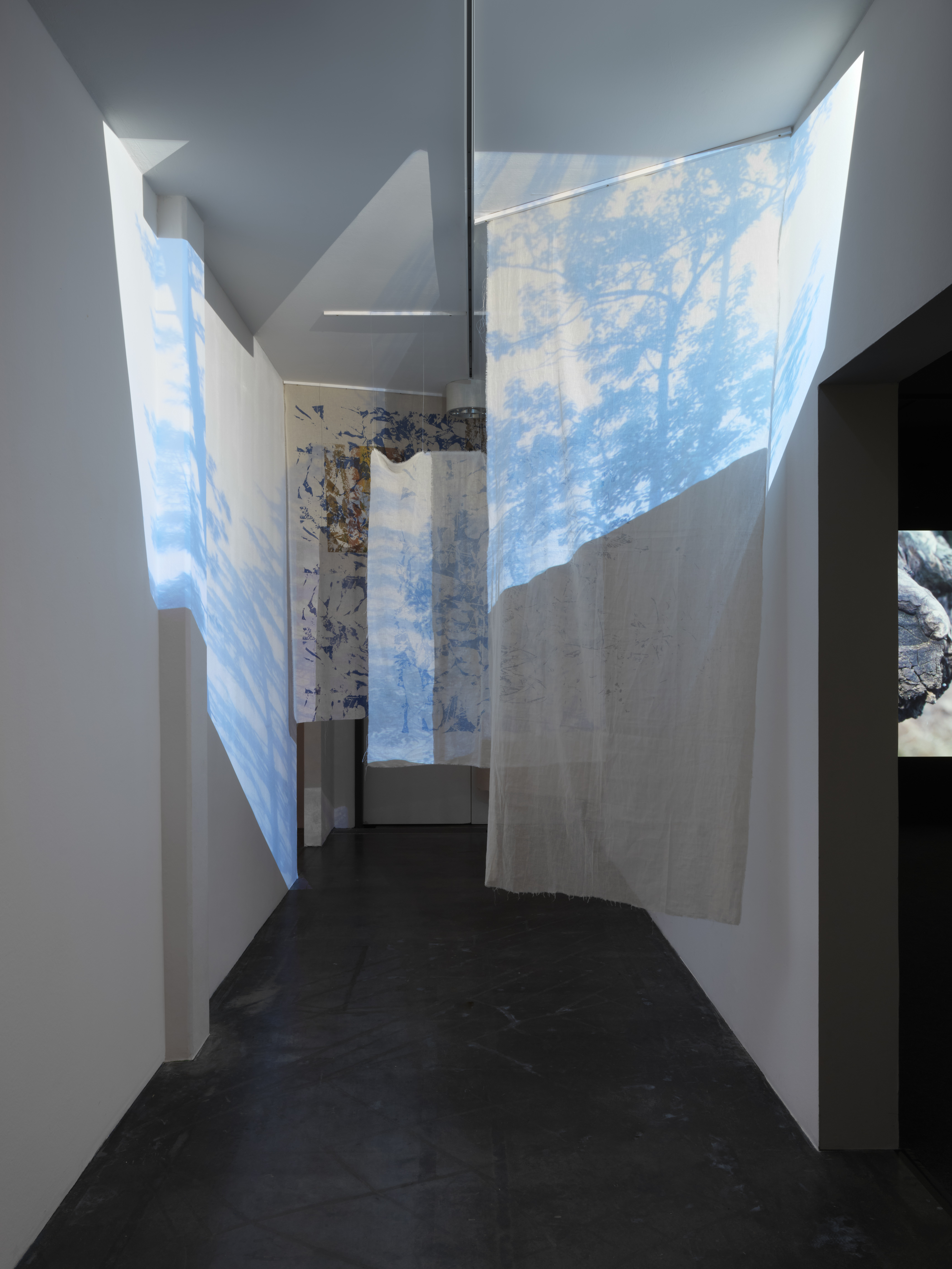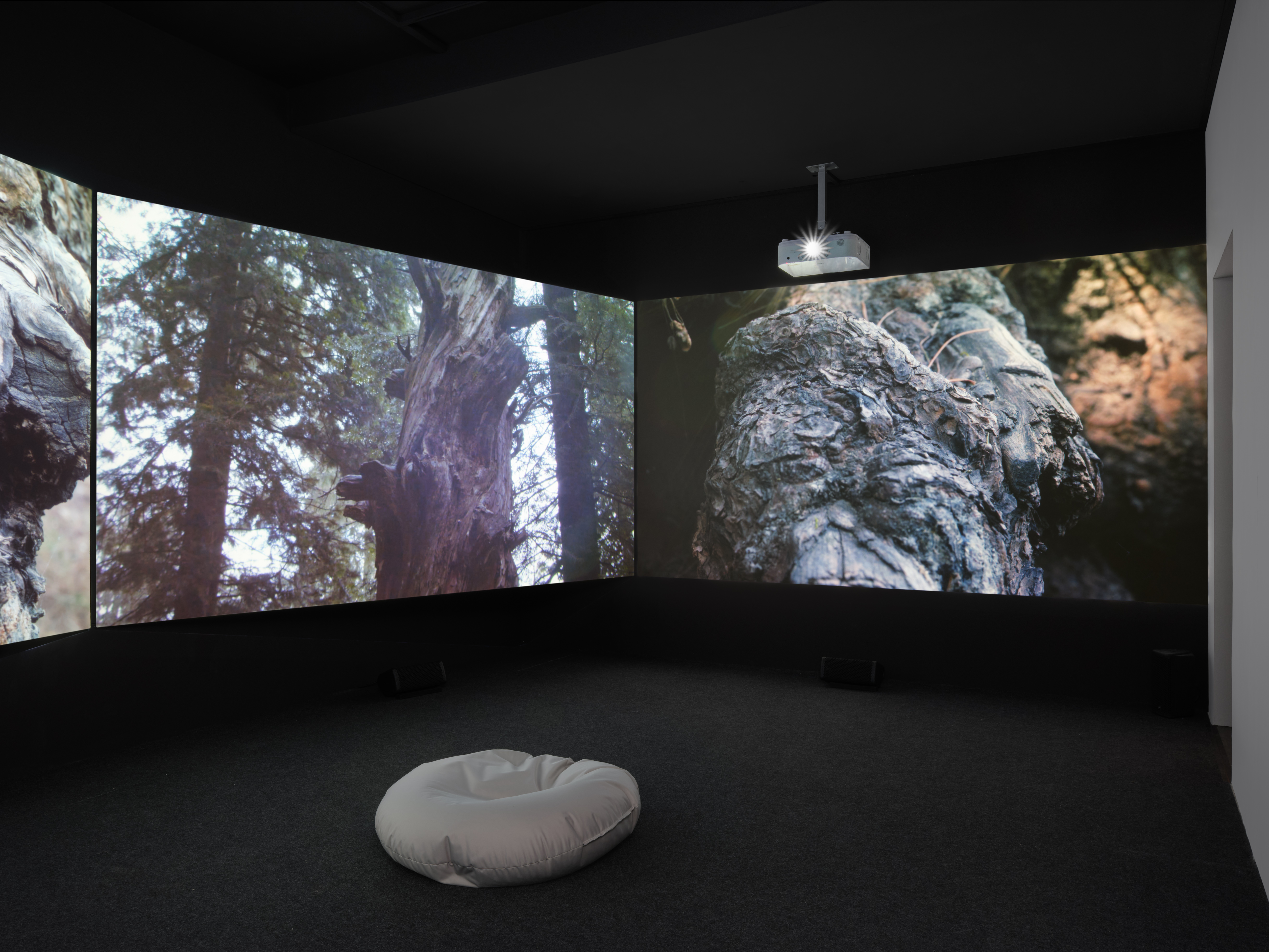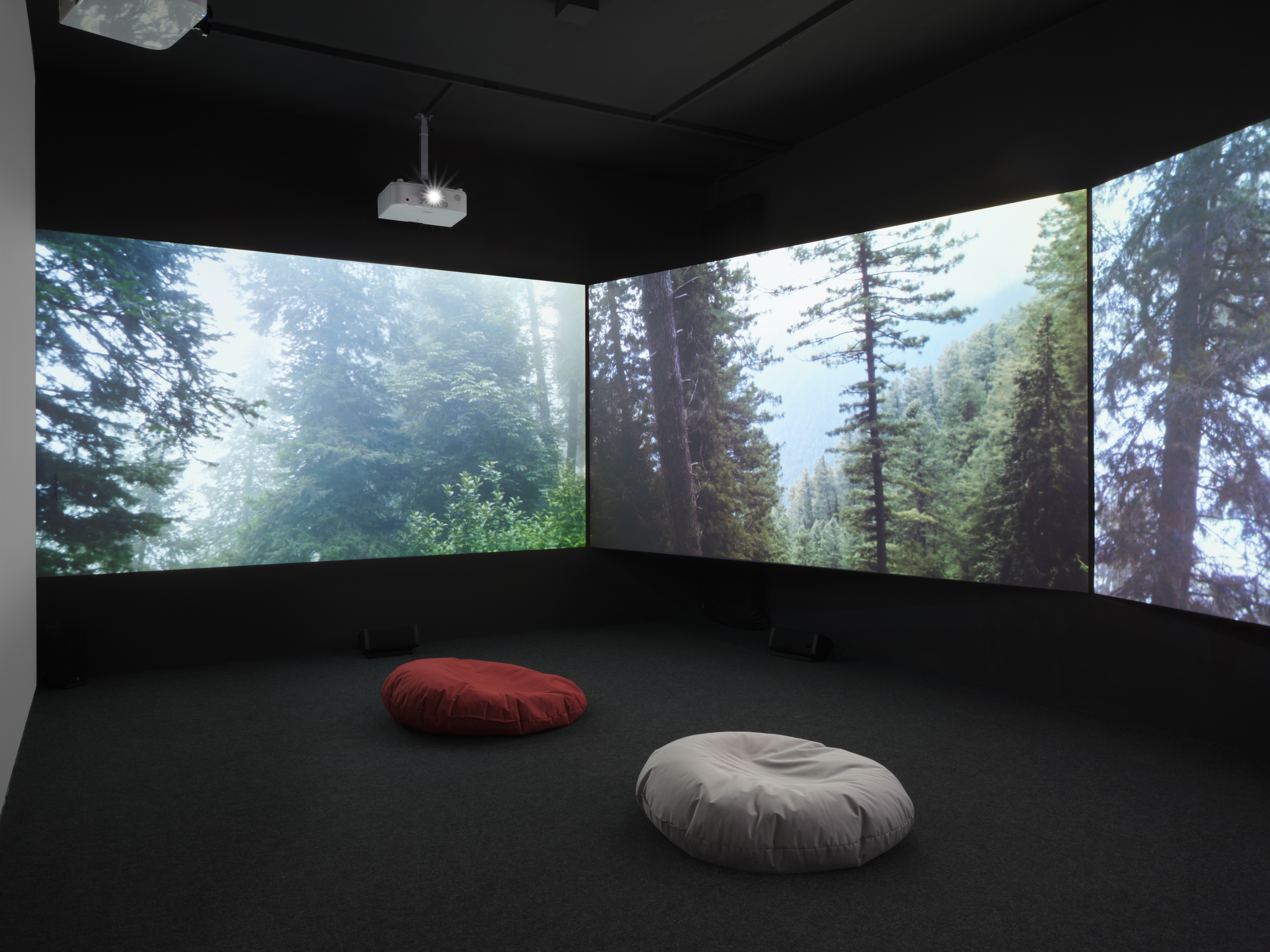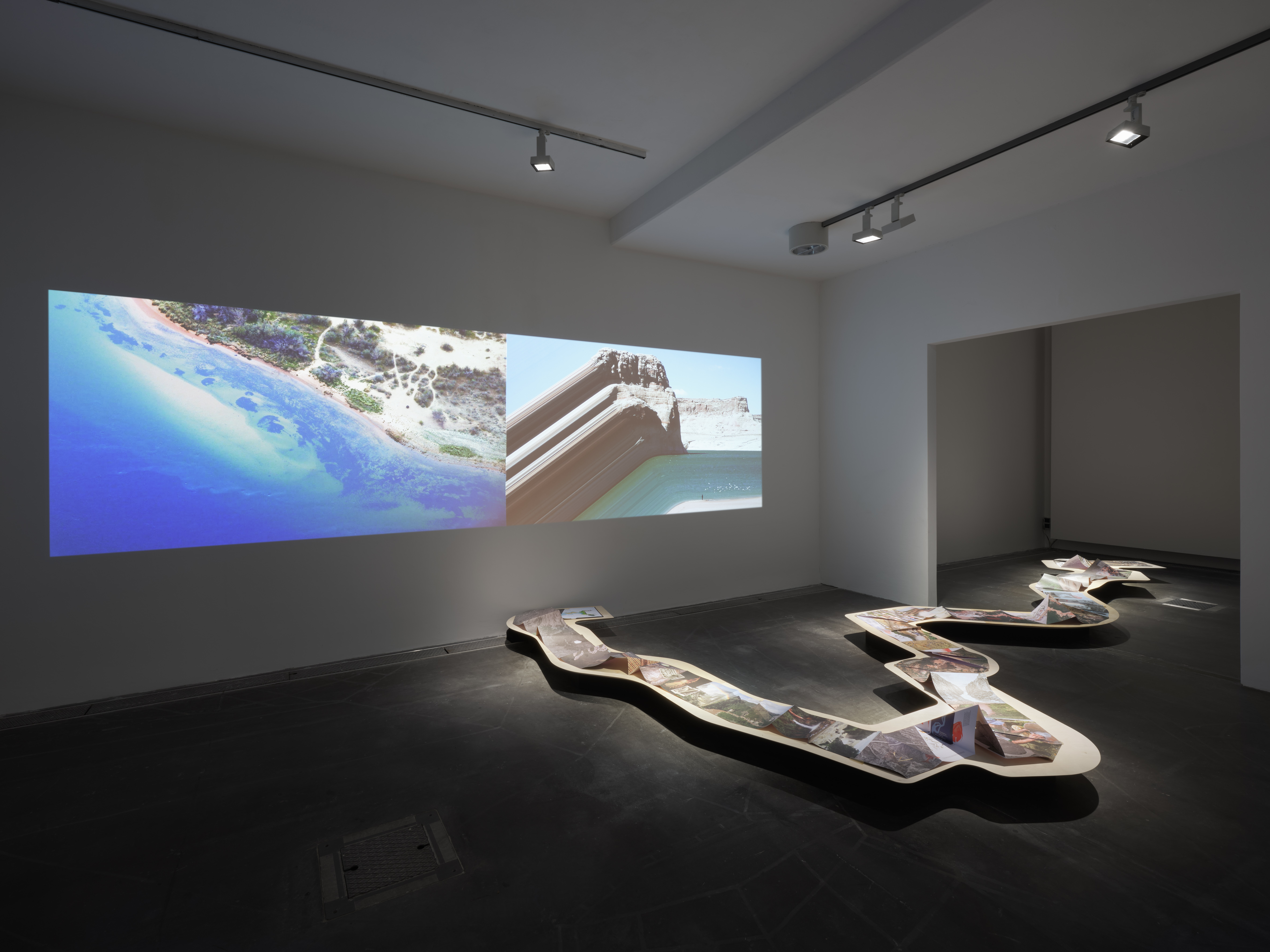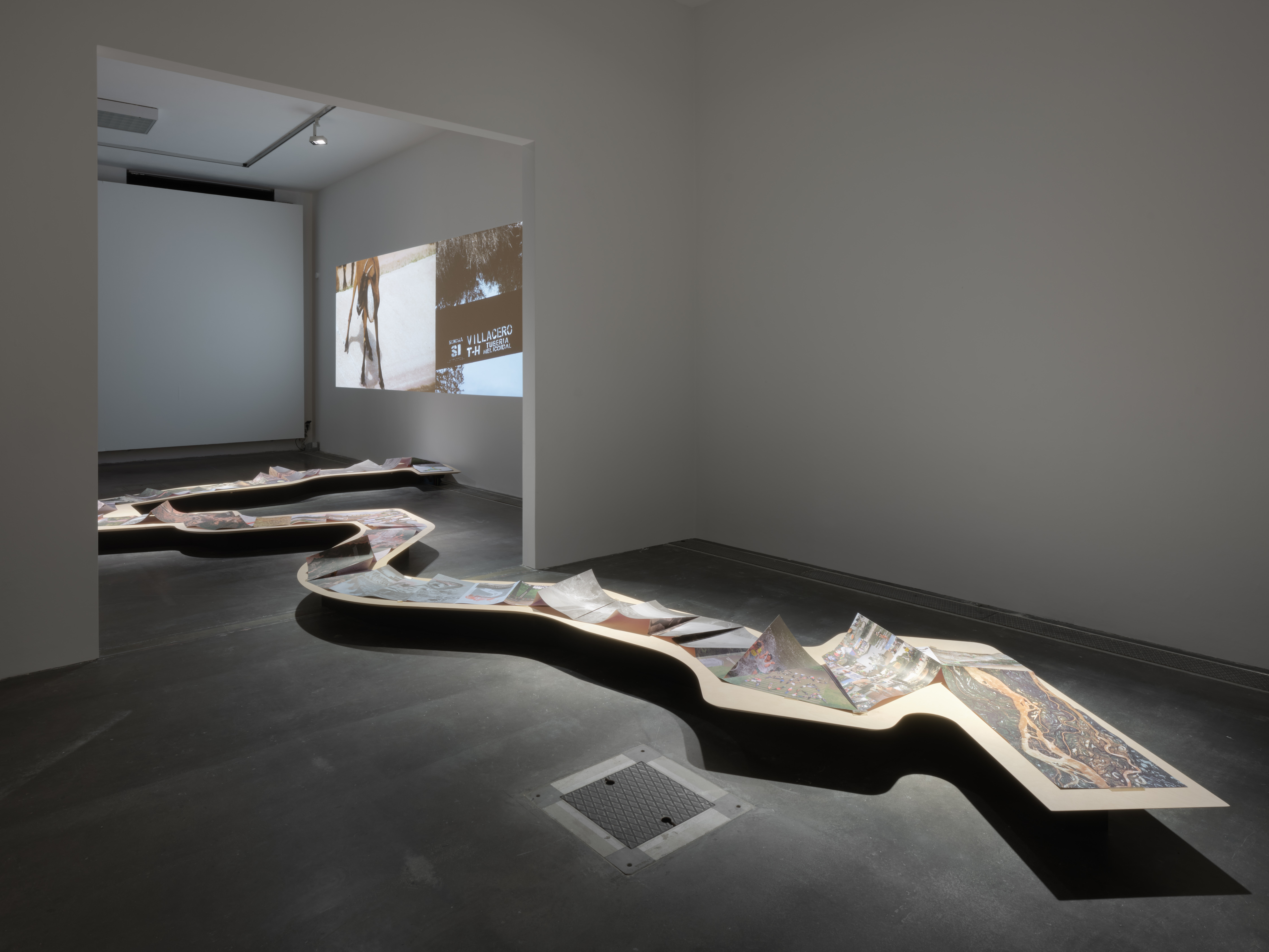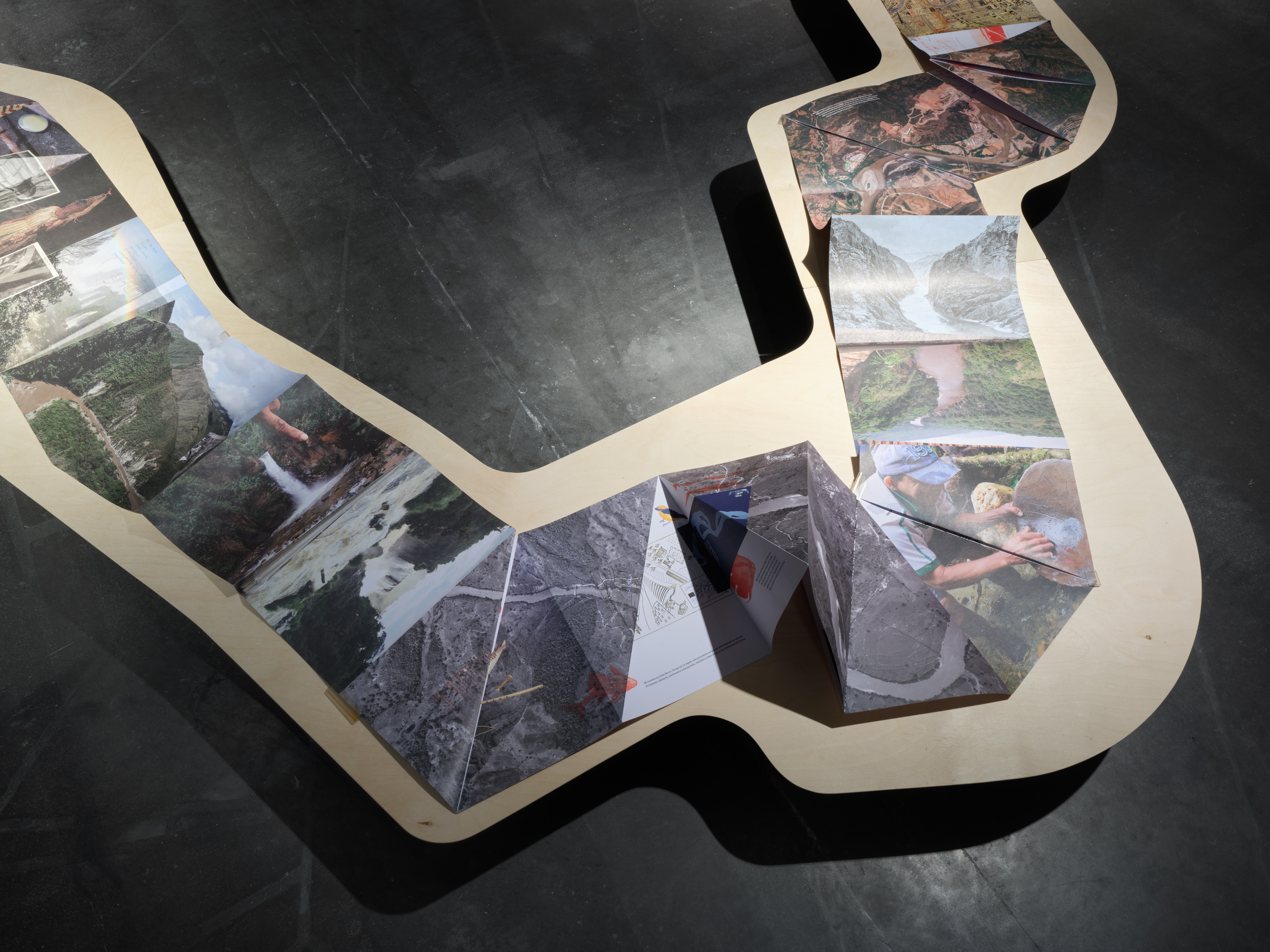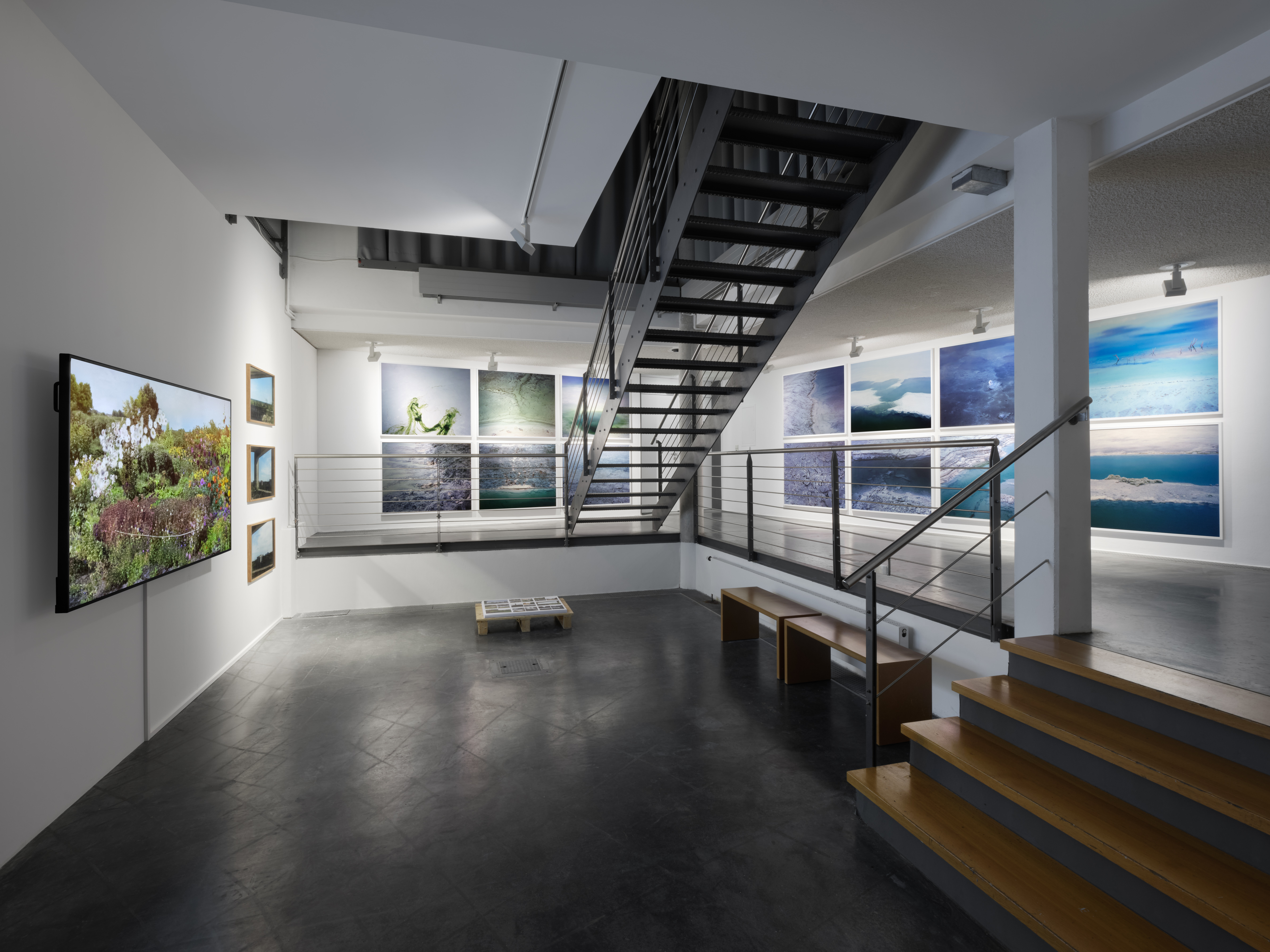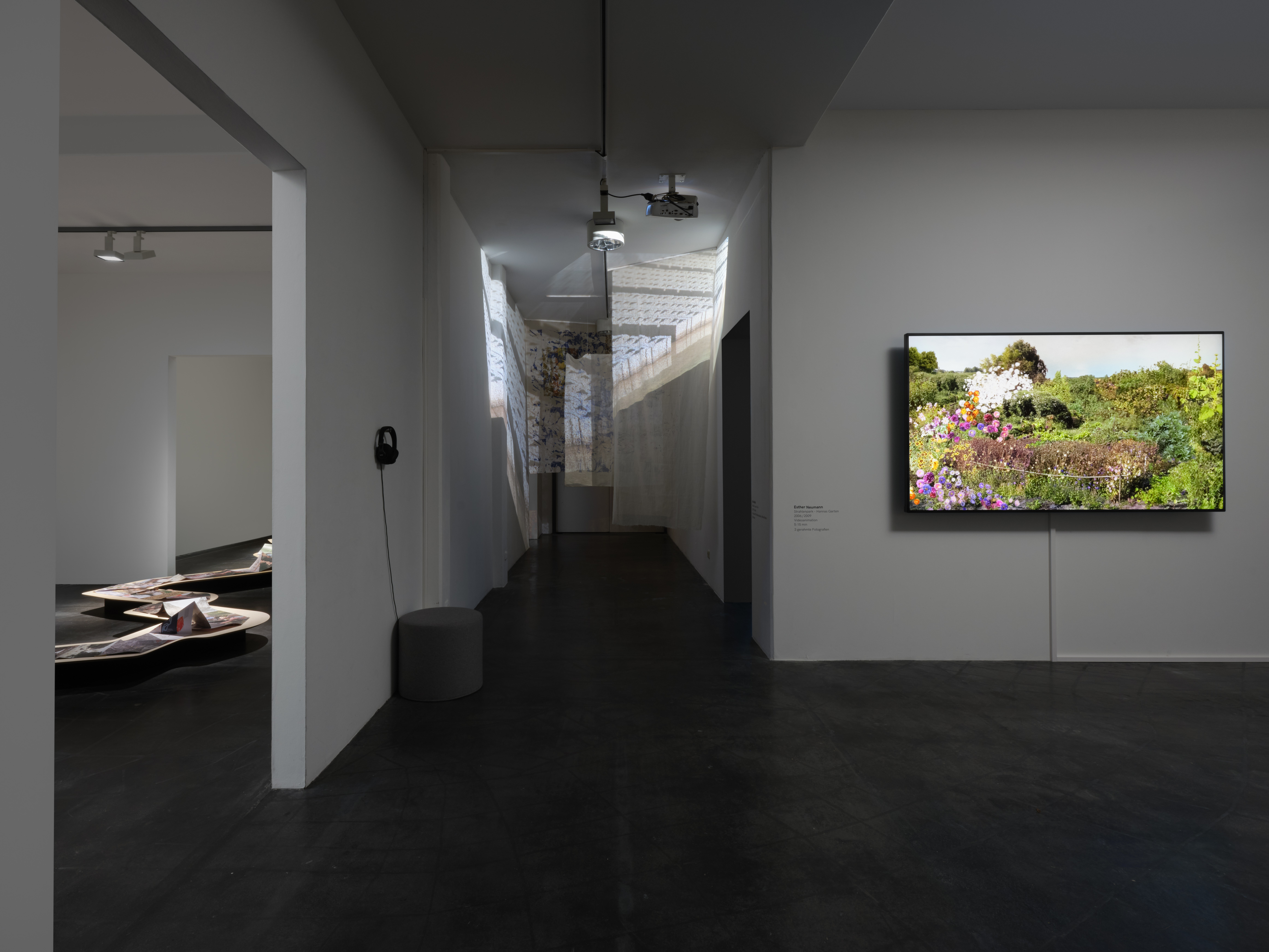Black Dogs and Red Forests
Black Dogs and Red Forests gathers together international artists who investigate the connection between the brutal legacy of colonial-extractivist practices and their influence on the natural environment, emphasizing the need for a new relationship through strategies of healing.
The exhibition could be considered the second chapter of the group show Possessed Landscape (2020). That exhibition pointed to the ways in which Indigenous concepts of land as inhabited by ancestors are being displaced by industry’s possession of land through boundless extraction, creating a widespread landscape of greed and disconnect.
Black Dogs and Red Forests takes as its starting point two new commissions by Jim Jasper Lumbera and Hira Nabi, recipients of the Edith-Russ-Haus’s Media Art Grant. Both started their research-based investigations on local histories of extraction as a way to contemplate sites of ecological ruin, eventually turning toward the notion of the embrace and possible healing of such landscapes.
Jim Jasper Lumbera’s work tells the story of the “black dog” character found in the collective imagination of the Philippines, who haunts the streets following war-induced epidemics. The Black Dog Which Causes Cholera engages with Philippine colonial history—specifically, the distillation of collective fear, intrusion, and contamination into a local idiom of resistance—and the continual destruction of the ecosystem. At the same time, this multipart installation carries strange resonances with the COVID-19 pandemic. Next to reworked archival colonial photographs that search for new meaning in abstraction, and conjure the ghost of the Philippine vernacular that resists the colonial framing, we find a live broadcast of a memorial located in the Philippines. The artist erected this memorial—which takes the form of a floating endemic tree—in the middle of a lake by the Taal volcano in Batangas. Here, pre-colonial oral tradition documents the alliance between humans and engkantos: spirits who dwell in the landscape and directly interact with and protect the Indigenous Peoples of the Philippines.
Hira Nabi’s four-channel video installation How to Love a Tree is set in the town of Murree, Pakistan, and its surrounding forest. During the artist’s research into what a healthy colonial body is, she found the special locale of Murree, established as a garrison town in 1853 following the construction of a sanatorium for colonial officers. British administrators closed off commons across South Asian colonies to construct such “healing zones.” Removed from “infested” urban areas, these idyllic hill stations perpetuated settler-colonialist visions of pastoral England. In reality, such places articulated segregation in medical, sanitary, and military-strategic terms. Extraction and invasion continue to overrun this region, which currently exists as a site of exhausted geography: the land is unable to sustain the tourists who follow well-trodden colonial pathways. “This work it is my attempt to gather together narratives and testimonies for the ways in which extraction has been commanded, and how entire species of human and non-human beings have been subjugated, but not without leaving behind their own traces of resilience,” says Nabi, who collaborated with local musicians to compose and orchestrate intimate forest concerts as healing offerings.
Esther Neumann and Bojan Mrđenović for years have documented the devastating beauty of destroyed landscapes through their researched-based projects. Accompanied by an interpreter and a driver from the Ministry of Disaster Management, Neumann conducted research trips to Chernobyl in 2005 to witness the influence of decades-long nuclear radiation in close proximity to the deserted town of Pripyat. Despite the extreme radiation, young forests have popped up, and their abundant vegetation felt, for the artist, almost like an offering of reconciliation. Neumann’s resulting animation work presents a portrait of the garden of Hannah, an older woman who refused to leave the area. Her flowers are beautiful, but also unsettlingly lush. Mrđenović’s photo series reveals how waste from chemical and atomic processes has created beautifully colored but toxic landscapes that take on extraterrestrial qualities. These seemingly unlivable sites are both testimonies to landscapes that require healing and care under borderless extractivism, as well as evidence of humans’ incredible capacity to adapt to radically changed circumstances.
Carolina Caycedo’s complex video and sculpture installation deals with environmental historical memory through the investigation of both water and social bodies. To Stop Being a Threat and to Become a Promise (2017) considers how infrastructure affects social bodies and the ways in which Indigenous perspectives and knowledges could be of great help in facing the planet’s future struggles.
Jim Jasper Lumbera and Hira Nabi were the 2021 recipients of the Media Art Grant from the Foundation of Lower Saxony at the Edith-Russ-Haus.
The info booklet on the exhibition with brief descriptions of all exhibited works can be downloaded free of charge as a PDF. The use is exclusively for private purposes, other uses must be coordinated with the Edith-Russ-Haus. Download here.

